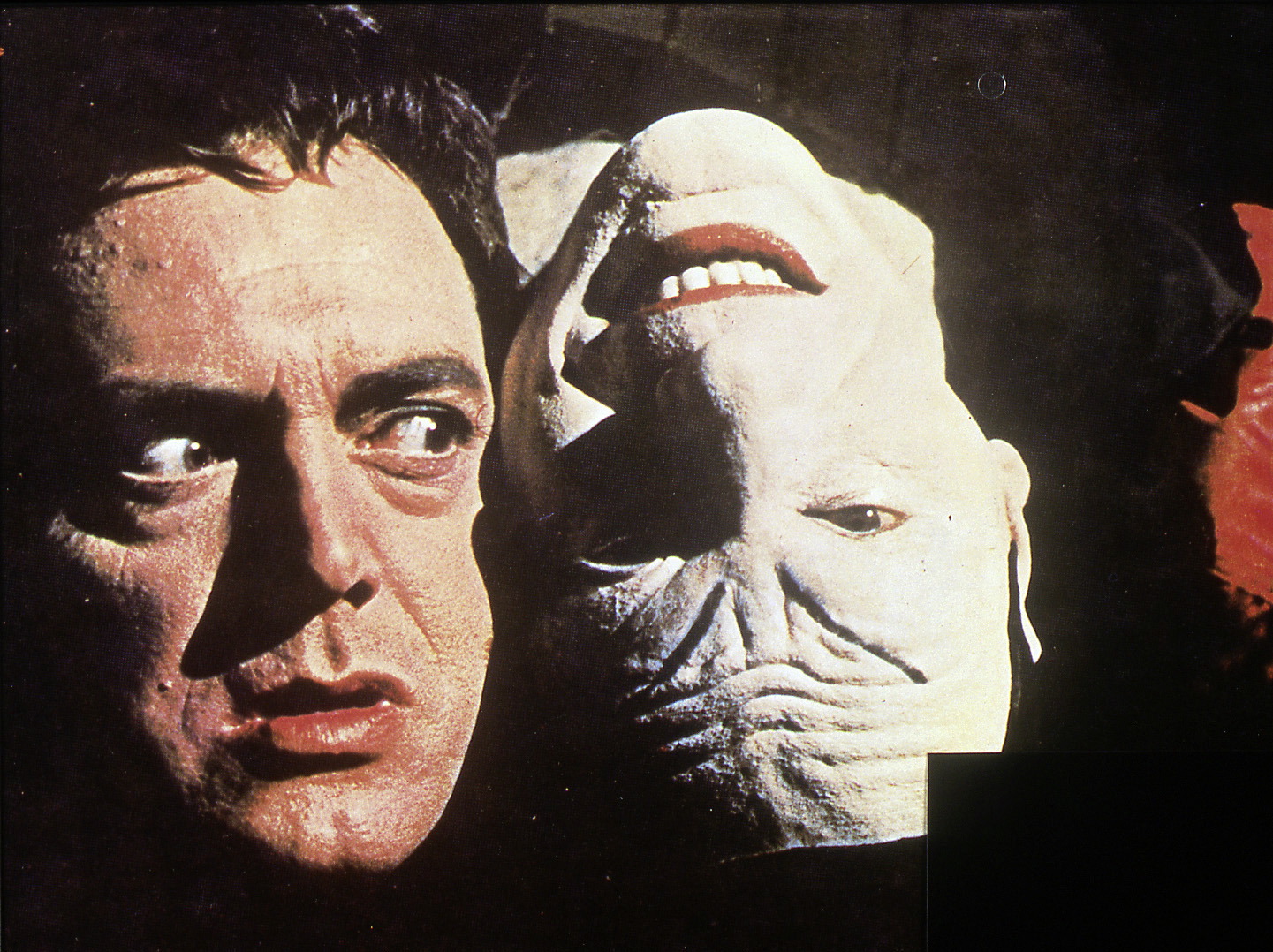
Faust
Gorski's 1960s film adaptation of Goethe's “Faust I” captures the tragedy from the Hamburg Schauspielhaus on the big screen, with an outstanding Gustav Gründgens as Mephisto - to this day, it is considered one of the best interpretations of the deepest human dilemmas between good and evil! “The task of this film adaptation must be to find the exact middle ground between filmed theater and pure film,” said Gründgens. The play should “neither be photographed nor softened by cinematic showmanship.” Theater film is thus neither a filmed stage nor pure cinematic art, yet it follows the camera beyond the horizon of experience of a theater visit. The color and lighting design sketches a dark world, while at the same time resolutely distancing itself from mysticism and blurriness in order to rely entirely on the expression of the actors.
Gorski’s FAUST uses the deep blacks of its theater setttings to enhance the mystical atmosphere of the play and to position the characters effectively. Black, symbolizing mystery, death, and power, frames the central themes of hell, damnation, and Mephisto’s dark magic. This stark contrast, embodied by Mephisto’s mocking white mask, exposes the dualities within Faust’s character.

Supporting Film: A Chairy Tale
In this short film, a chair, animated by Evelyn Lambart, refuses to be sat upon, forcing a young man to perform a sort of dance with the chair. The musical accompaniment is by Ravi Shankar and Chatur Lal. This virtuoso film is the result of a collaboration between Norman McLaren and Claude Jutra.


